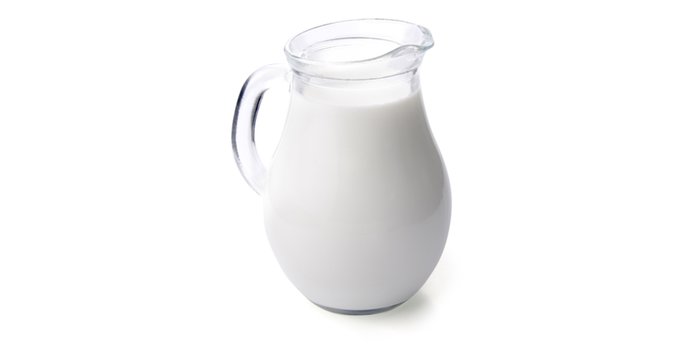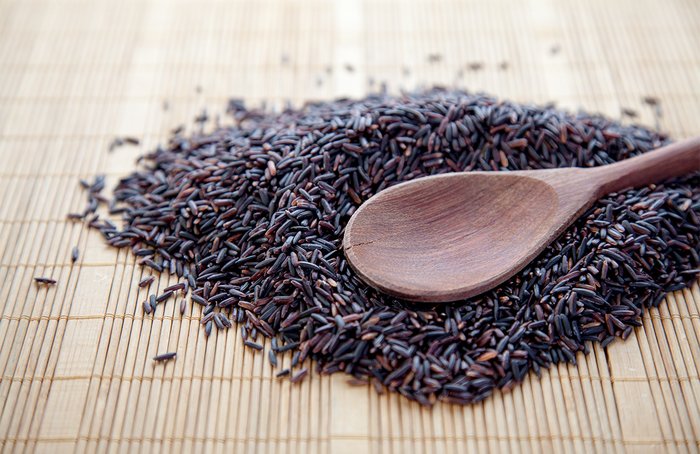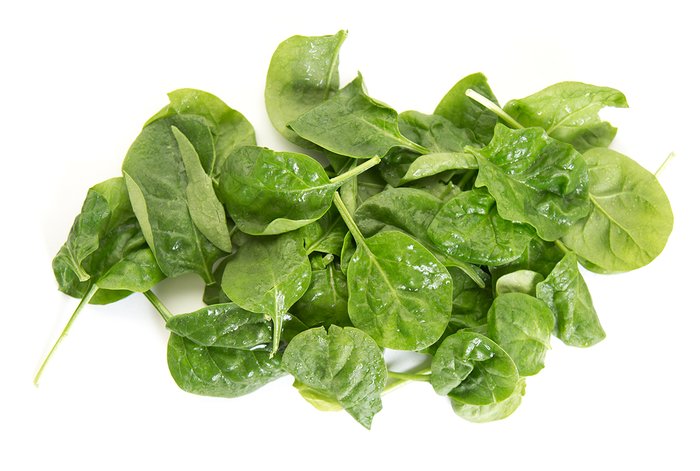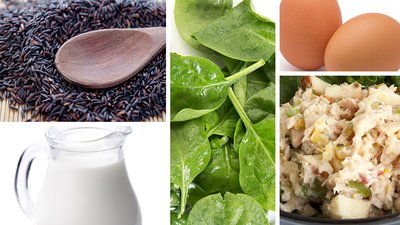Even if you're a lifelong penny pincher and coupon clipper, you should know that there are certain food items that are worth the higher price tag. If you need to fuel an energetic lifestyle and have a few bucks to spare, add these foods to your shopping list.
Goat's Milk
Tangy goat's milk can cost about twice as much as conventional cow's milk, but the extra nutritional benefits it provides might convince you to loosen up the purse strings. Food scientists have compared the nutritional levels of cow and goat's milk from animals raised under similar conditions. They found that goat's milk can contain more health-hiking omega-3 fats; more bone-building calcium, phosphorus, and magnesium; and more of the increasingly popular fat source, conjugated linoleic acid (CLA).[1]
The increased benefits of goat's milk derive from a number of factors. First, the milk contains more solids—essentially, all the non-fat elements minus water—than cow's milk, which can result in higher concentrations of nutrients. The nutrients in goat's milk, including iron and calcium, may be more easily digested and metabolized than the same nutrients in cow's milk.[2]Goat's milk is also less likely to contribute to dairy-allergy symptoms and inflammation, and it's easier to digest than cow's milk.[3,4,5]

In case you're still on the fence, it's worth noting that companies raising goats for milk and meat production are not permitted to provide their animals with the bovine growth hormones commonly used in large-scale cow's milk production.
Black Rice
For many fitness fanatics, brown rice is a budget-friendly source of energizing carbs. But if you come across a bag of the black variety, give it a shot. You can almost always find it in the bulk grains and products section of Whole Foods or similar supermarkets. Also known as Forbidden Rice, black rice is an antioxidant powerhouse, especially rich in a class of health-promoting flavonoids known as anthocyanins.[6,7,8,9] It is also a good source of manganese, iron and zinc.

Nutrition aside, black rice has a great texture and slightly sweet taste. One bite and you'll wonder why you've been settling for the brown variety all this time. It also tends to cook faster than brown rice.
Omega Eggs
Standard eggs are currently a ridiculously cheap source of protein for growing muscles, but you get what you pay for. You'll have to shell out a bit more for eggs from chickens whose diets include omega-rich foods such as flaxseed or fish oil, but these eggs can have up to five times more omega-3 fatty acids than normal eggs.[10] The three most common omega-3s to see marketed on a label are docosahexaenoic acid (DHA), eicosapentaenoic acid (EPA), and the most common essential omega-3 fatty acid, alpha-linolenic acid (ALA).

Most people in the United States don't consume enough heart-healthy omega-3 fats in their daily diets. Scientific studies suggest using omega-3-enriched eggs can help improve blood cholesterol and triglyceride numbers, supporting heart health.[11,12,13,14]
Organic Baby Spinach
Baby spinach packed in plastic clamshells can make assembling a healthy salad a breeze—until you consider how many pesticides are in commercial spinach. Using USDA data, the Environmental Working Group (EWG) determined that conventionally grown spinach typically has the highest levels of pesticide residues of any vegetable commonly consumed by people in the United States. And no, washing doesn't send all the chemicals down the drain. In fact, researchers in Zurich, Switzerland, determined that U.S. consumers ingest 0.51 percent of every pesticide sprayed on or otherwise used in the production of the fruits and vegetables.[15]

The Environmental Protection Agency (EPA) sets an acceptable cancer-causing risk from lifetime exposure to pesticides in fruits and vegetables at no less than 1 in 1,000,000th of a chance of developing some form of cancer. Using the EPA's same calculations and assumptions, researchers in Belgium reported that the risk is actually more like 2.76 per 1,000 when consuming raw fruits and vegetables grown using pesticides.[16] It's not yet clear what adverse health effects can directly be attributed to regular exposure to these pesticide residues, but splurging for organic spinach seems like a good insurance policy. The EWG also determined that non-organic strawberries, nectarines, apples, peaches, pears, cherries, grapes, celery, tomatoes, bell peppers, potatoes, and hot peppers can contain troubling amounts of pesticides.
Canned Tuna
Spend more of your hard-earned cash on canned tuna from smaller scale companies like Wild Planet and Safe Catch, and you'll end up with more healthy omega-3 fatty acids in your diet. Why? Unlike the mega-canners, smaller producers often heat-treat their tuna after it's been canned, not beforehand, which locks in the omegas and the flavor.

Also, by targeting younger fish, smaller producers effectively lower the amount of harmful chemicals such as mercury, which is a function of age: The older the fish, the more time they have to accumulate heavy metals and other contaminants. Some smaller brands also pack their tuna in tins that aren't lined with the chemical Bisphenol-A (BPA), which has been associated with all kinds of unwanted adverse effects on health and reproduction, and has even been shown to be linked to weight gain.[17]
References
- Ceballos, L. S., Morales, E. R., de la Torre Adarve, G., Castro, J. D., Martínez, L. P., & Sampelayo, M. R. S. (2009). Composition of goat and cow milk produced under similar conditions and analyzed by identical methodology. Journal of Food Composition and Analysis, 22(4), 322-329.
- Aliaga, I. L., Alferez, M. J. M., Barrionuevo, M., Lisbona, F., & Campos, M. S. (2000). Influence of goat and cow milk on the digestive and metabolic utilization of calcium and iron. Journal of Physiology and Biochemistry, 56(3), 201-208.
- Ballabio, C., Chessa, S., Rignanese, D., Gigliotti, C., Pagnacco, G., Terracciano, L., ... & Caroli, A. M. (2011). Goat milk allergenicity as a function of α S1-casein genetic polymorphism. Journal of Dairy Science, 94(2), 998-1004.
- Masoodi, T. A., & Shafi, G. (2010). Analysis of casein alpha S1 & S2 proteins from different mammalian species. Bioinformation, 4(9), 430.
- Clark, S., & Sherbon, J. W. (2000). Alpha s1-casein, milk composition and coagulation properties of goat milk. Small Ruminant Research, 38(2), 123-134.
- Abdel-Aal, E. S. M., Young, J. C., & Rabalski, I. (2006). Anthocyanin composition in black, blue, pink, purple, and red cereal grains. Journal of Agricultural and Food Chemistry, 54(13), 4696-4704.
- Chen, X. Q., Nagao, N., Itani, T., & Irifune, K. (2012). Anti-oxidative analysis, and identification and quantification of anthocyanin pigments in different coloured rice. Food Chemistry, 135(4), 2783-2788.
- Deng, G. F., Xu, X. R., Zhang, Y., Li, D., Gan, R. Y., & Li, H. B. (2013). Phenolic compounds and bioactivities of pigmented rice. Critical Reviews in Food Science and Nutrition, 53(3), 296-306.
- Zhang, M. W., Zhang, R. F., Zhang, F. X., & Liu, R. H. (2010). Phenolic profiles and antioxidant activity of black rice bran of different commercially available varieties. Journal of Agricultural and Food Chemistry, 58(13), 7580-7587.
- Samman, S., Kung, F. P., Carter, L. M., Foster, M. J., Ahmad, Z. I., Phuyal, J. L., & Petocz, P. (2009). Fatty acid composition of certified organic, conventional and omega-3 eggs. Food Chemistry, 116(4), 911-914.
- Garg, M. L., Blake, R. J., Clayton, E., Munro, I. A., Macdonald-Wicks, L., Singh, H., & Moughan, P. J. (2007). Consumption of an n-3 polyunsaturated fatty acid-enriched dip modulates plasma lipid profile in subjects with diabetes type II. European Journal of Clinical Nutrition, 61(11), 1312.
- Bovet, P., Faeh, D., Madeleine, G., Viswanathan, B., & Paccaud, F. (2007). Decrease in blood triglycerides associated with the consumption of eggs of hens fed with food supplemented with fish oil. Nutrition, Metabolism and Cardiovascular Diseases, 17(4), 280-287.
- Maki, Elswyk, V., McCarthy, Seeley, Veith, Hess, ... & Davidson. (2003). Lipid responses in mildly hypertriglyceridemic men and women to consumption of docosahexaenoic acid-enriched eggs. International Journal for Vitamin and Nutrition Research, 73(5), 357-368.
- Öhman, M., Åkerfeldt, T., Nilsson, I., Rosen, C., Hansson, L. O., Carlsson, M., & Larsson, A. (2008). Biochemical effects of consumption of eggs containing omega-3 polyunsaturated fatty acids. Upsala Journal of Medical Sciences, 113(3), 315-324.
- Juraske, R., Mutel, C. L., Stoessel, F., & Hellweg, S. (2009). Life cycle human toxicity assessment of pesticides: comparing fruit and vegetable diets in Switzerland and the United States. Chemosphere, 77(7), 939-945.
- Keikotlhaile, B. M., Spanoghe, P., & Steurbaut, W. (2011). Risk assessment of oncogenic potency of pesticide residues in fruits and vegetables. Communications in Agricultural and Applied Biological Sciences, 76(4), 853-861.
- Song, Y., Hauser, R., Hu, F. B., Franke, A. A., Liu, S., & Sun, Q. (2014). Urinary concentrations of bisphenol A and phthalate metabolites and weight change: a prospective investigation in US women. International Journal of Obesity (2005), 38(12), 1532.

